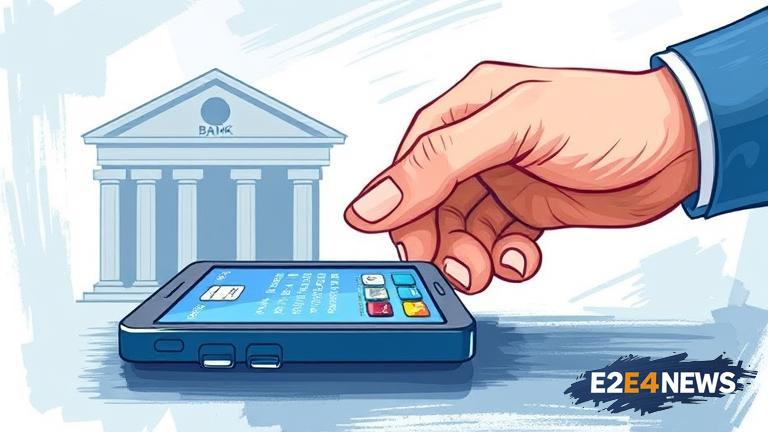The use of contactless payment systems has become increasingly popular in recent years, with many consumers opting for the convenience of tap-to-pay transactions. However, some merchants have begun to restrict these types of payments, citing concerns over fraud and financial losses. Banks, on the other hand, are defending the security of contactless payments, arguing that they are just as secure as traditional payment methods. According to banking officials, contactless payments are protected by multiple layers of security, including encryption and tokenization. These measures, they claim, make it extremely difficult for hackers to intercept and use sensitive payment information. Despite these assurances, some merchants remain skeptical, pointing to a rise in contactless payment fraud as evidence that the system is not foolproof. In response to these concerns, some banks have implemented additional security measures, such as spending limits and transaction monitoring. These measures are designed to detect and prevent suspicious activity, and to protect both consumers and merchants from financial losses. However, some merchants argue that these measures do not go far enough, and that more needs to be done to address the issue of contactless payment fraud. One of the main concerns is that contactless payments do not require a PIN or signature, making it easier for thieves to use stolen cards. To address this issue, some banks are exploring the use of biometric authentication, such as facial recognition or fingerprint scanning. This technology, they argue, would provide an additional layer of security, making it even more difficult for hackers to use stolen payment information. Despite the potential benefits of biometric authentication, some consumers are expressing concerns over the use of this technology. They argue that it raises important questions about privacy and data protection, and that more needs to be done to ensure that sensitive biometric data is protected. As the debate over contactless payment security continues, it is clear that there are no easy answers. Both banks and merchants have a role to play in ensuring the security of these transactions, and it will likely require a collaborative effort to address the issue of contactless payment fraud. In the meantime, consumers are advised to remain vigilant, and to take steps to protect themselves from financial losses. This includes monitoring their accounts regularly, reporting any suspicious activity, and keeping their payment information up to date. By working together, it is possible to create a more secure and convenient payment system, one that balances the needs of consumers, merchants, and banks. The use of contactless payments is likely to continue to grow in popularity, and it is up to the industry to ensure that these transactions are secure and reliable. This will require ongoing investment in security measures, as well as a commitment to transparency and accountability. As the payment landscape continues to evolve, it is clear that contactless payments will play a major role. However, it is also important to recognize the potential risks and challenges associated with these transactions, and to take steps to mitigate them. By doing so, we can create a more secure and convenient payment system, one that benefits everyone involved. The issue of contactless payment security is complex and multifaceted, and it will require a comprehensive approach to address. This includes not only the implementation of additional security measures, but also a commitment to education and awareness. By educating consumers about the potential risks and benefits of contactless payments, we can empower them to make informed decisions about their financial transactions. This, in turn, can help to build trust and confidence in the payment system, and to promote the use of contactless payments as a convenient and secure way to make transactions. Ultimately, the key to addressing the issue of contactless payment security is to strike a balance between convenience and security. This requires a nuanced understanding of the potential risks and benefits of these transactions, as well as a commitment to ongoing investment in security measures. By working together, we can create a payment system that is both convenient and secure, one that benefits consumers, merchants, and banks alike.
